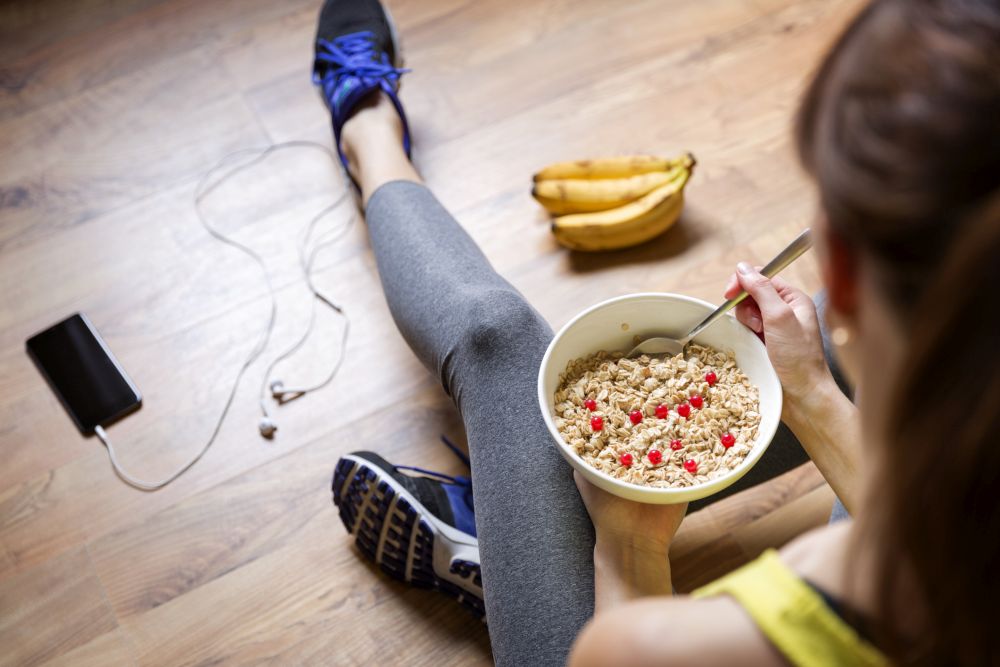Solving the mystery of ‘runger’
Dr. Beth Mansfield explains the reason for your constant hunger

You’ve decided to up your mileage — maybe you’ve gone from training for a 5K to a 10K or a half-marathon to a marathon — and everything’s going well except for one problem: you’re constantly hungry. It doesn’t seem to matter what you do, nothing satisfies your hunger. This is a common problem for runners who’ve recently increased their mileage or workout intensity, or who are training for long distances. We spoke with Dr. Beth Mansfield (PhD), an Ottawa-based registered dietitian, certified exercise physiologist with Peak Performance and sport nutrition specialist, who explained why this “runger” happens, and what you can do about it.

RELATED: Nutrition: its role in running performance
Why does running increase your appetite?
The answer to that question may seem obvious, but there’s more to it than that. Your appetite will be affected differently by who you are and the type of run you’re doing on any given day. Dr. Mansfield explains that your hunger levels will vary depending on the duration and intensity of your run, and can also be affected by the timing of your last meal and whether you consumed foods or energy-containing fluids during your run training session. Considering all these factors, she says your post-run appetite may be minimal or ramped right up.
“Not all runners have an appetite to eat right after training,” says Dr. Mansfield. “However, to avoid going into an energy deficit, it is important to have small snacks or a meal within the recovery window post-training.” She adds that if you’re not planning on doing any more exercise that day, you should make sure you refuel within three to four hours post-training. If you will be doing another training session, aim to get that recovery meal in within one to two hours post-workout.
Intuitive eating to combat constant hunger
For runners who can’t stop eating after their training or who find that they are constantly hungry, Dr. Mansfield suggests using an ‘intuitive eating’ approach to evaluate if you are really hungry and need to eat more food or if you are eating for other reasons. One way to do this is by using a hunger scale. The following scale from HealthLink BC is a good example.
- 1—Starving, weak, dizzy
- 2—Very hungry, cranky, low energy, lots of stomach growling
- 3—Pretty hungry, stomach is growling a little
- 4—Starting to feel a little hungry
- 5—Satisfied, neither hungry nor full
- 6—A little full, pleasantly full
- 7—A little uncomfortable
- 8—Feeling stuffed
- 9—Very uncomfortable, stomach hurts
- 10—So full you feel sick
The goal is that each time you eat a meal, you should aim to be at a five or six. Of course, sometimes you may go a little over (which is OK), and sometimes you may be a little under. If the latter, the simple solution is to go back and eat more until you’re satisfied. For runners who tend to have the opposite problem and have suppressed appetites after running, Mansfield suggests having liquids like a smoothie to help you refuel, and then having a full meal later, when your stomach can handle it.

It isn’t all about running
Dr. Mansfield reminds us that running isn’t the only thing that affects your nutrition needs, even if you have increased your mileage. She says daily physical activities, like walking the dog, working in the garden or commuting around by bike, also contribute to your energy requirements, and for some runners, they expend more energy in their daily physical activities than in their actual run training. For this reason, she says it’s important to factor this into your meal and snack planning.
She adds that maintaining an appropriate energy balance to meet your daily metabolism, physical activity and exercise is important to avoid falling into a relative energy deficit, which has wide-ranging effects on all your body’s systems and compromises your health and performance.
“This makes it even more important that runners of all ages really understand their overall energy needs and make sure that they eat enough to support their basal metabolism, physical activity and exercise needs,” says Mansfield.
For those runners who track their pace, distance and heart rate with wearable technology, she cautions that they can under- or over-report your energy (calories) burned during a training session, so you should only use the data to give you a sense of your energy expended. Ultimately, your best bet is to listen to your body, and if you’re hungry, you should eat. Mansfield emphasizes that the timing of those meals and snacks is important, too, to ensure you’re not restricting eating at a time when your body needs fuel.
“Pre, during and post-workout are the key times where fluids and energy intake are important,” she says. “Priority one is fluid intake, priority two is carbohydrate-rich foods and priority three is adding protein-rich foods to the mix.”
If you’re constantly feeling hungry, use the following tips:
- Stay hydrated. Thirst and hunger are regulated in the same part of your brain, and it’s easy to mistake dehydration for an empty stomach. As Mansfield says, fluid intake is priority number one, especially immediately after exercise.
- Make sure you’re post-run meals are balanced. A meal that contains fibre-rich carbohydrates, fats and protein will help you satisfy your hunger and meet your nutrition needs.
- Use a hunger scale to determine if your hunger is physical or caused by something else.
- At the end of the day, if you’re hungry, eat.


